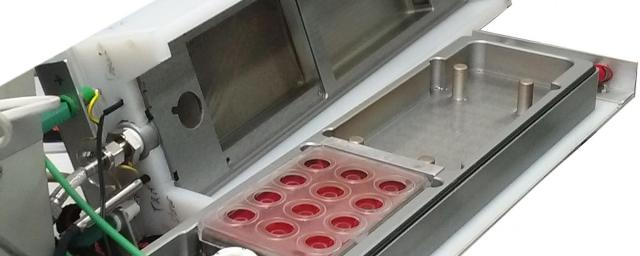Our solution
Inhalation toxicology
Inhalation toxicity testing, which provides the basis for hazard labeling and risk management of chemicals with potential exposure to the respiratory tract, has traditionally been conducted using animals. For aerosolized (nano)materials, human risk analysis is based upon 28 or 90-day inhalation studies using rodents (e.g. OECD Test Guideline 412 and 413), which do not perfectly predict the human response. Concerns related to the weak predictive ability as well as the use of animals, cost, time, and technical difficulty of in vivo inhalation resulted in the development of in vitro efficient and accurate, human-relevant lung cell-based methods to assess the potential hazards associated with xenobiotic exposure. The first in vitro inhalation studies were performed with submerged lung cell cultures adding nanomaterial dispersions. While submerged cultures are still widely used in in vitro pulmonary toxicity studies due to relative ease of handling, dispersion exposures are poorly representative of aerosol inhalation in humans. To overcome this, in vitro systems are developed for airborne particle exposure of lung cells at the air-liquid interface (ALI) .
At VITO ALI exposure modules, aerosol generation and online characterization instruments, and a battery of biological assays (e.g. TransEpithelial Electrical Resistance, cell viability, oxidative stress, inflammatory response) for screening of human health impact are available for evalution of toxic effects of airborne particulates/nanoparticles; consumer products e.g. electronic cigarettes; environmental/occupational chemicals e.g. volatile components from petroleum industry; and pharmaceuticals for respiratory tract disorders.
Publications
Relevant publications and/or innovation products
- Frijns E et al. 2017. A Novel Exposure System Termed NAVETTA for In Vitro Laminar Flow Electrodeposition of Nanoaerosol and Evaluation of Immune Effects in Human Lung Reporter Cells. Environmental Science & Technology, 51 (9), DOI:10.1021/acs.est.7b00493
- Patent application for NAVETTA product; Flatbed air-liquid interface exposure module and methods (EP16200571.4; 2016)
- Klein SG et al. 2017. Endothelial responses of the alveolar barrier in vitro in a dose-controlled exposure to diesel exhaust particulate matter. Particle and Fibre Toxicology, 14 (7), DOI: 10.1186/s12989-017-0186-4
- Kumar A et al. 2017. A biocompatible synthetic lung fluid based on human respiratory tract lining fluid composition. Pharrmaceutical Research, 30, DOI: 10.1007/s11095-017-2169-4
- Wells JR et al. 2017. Reactive indoor air chemistry and health – A workshop summary. International Journal of Hygiene and Environmental Health, 220 (8), DOI: 10.1016/j.ijheh.2017.09.009
- Dankers ACA et al. 2017. A practical approach to assess inhalation toxicity of metal oxide nanoparticles in vitro. Journal of Applied Toxicology, DOI: 10.1002/jat.3518
Infrastructure
Air-liquid interface facilities: VITROCELL® 6/4 CF base module; VITROCELL® 24/48 cultivation and exposure system; NAVETTA, patented in-house co-developed module. (Nano)aerosol generation facilities: Condensation Monodisperse Aerosol generator, Electrospray Aerosol generator, Single and Six Jet atomizers, Solid Aerosol generator, and a Soot generator. Nanomaterial characterization facilities: size distribution (NTA, DLS, CPS), zeta potential, UV-Vis spectroscopy, X-ray diffraction, (single-particle)ICP-MS/ICP-AES, S(T)EM, nano-aerosol characterization equipment (e.g. FMPS, SMPS, CPC, DC and electrometer, OPC, NSAM, ESP, and LPI) and (particle free) test chambers. Dedicated cell culture laboratories and assay facilities for biological characterisation of nanomaterials. Transcriptomics and proteomics facilities, including data science.
